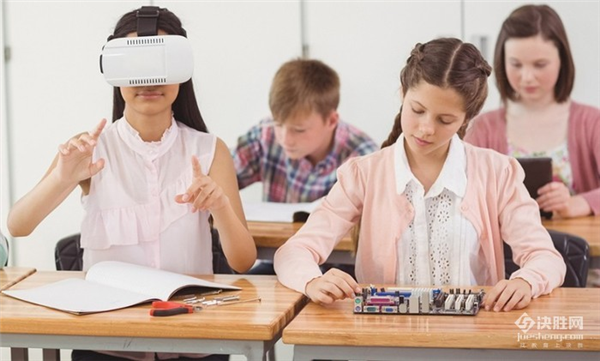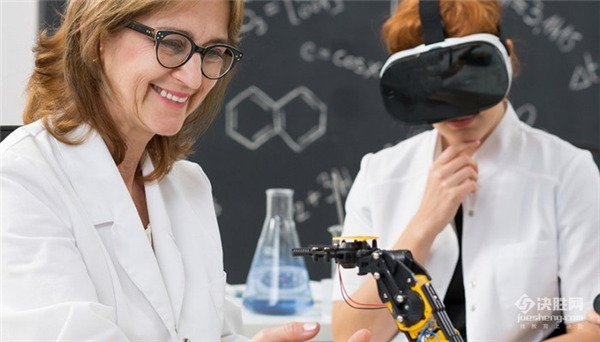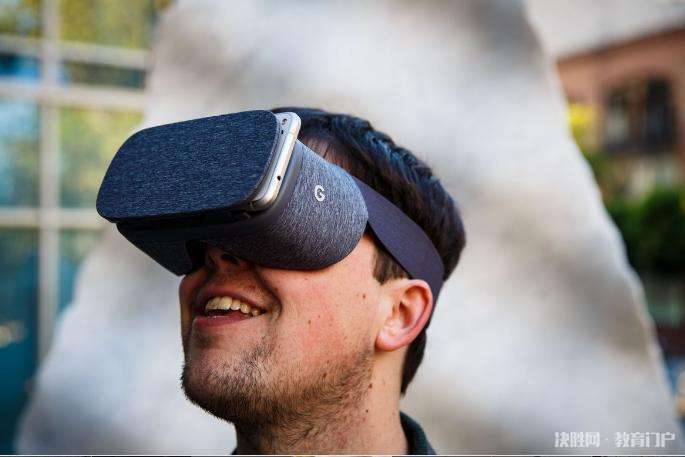In the past two years, VR technology has gradually become hot, and online shopping, video chat, virtual classrooms, etc. are becoming more and more popular in our lives. Some people even predicted that in the future, as long as a virtual world device is installed, the real scene of the virtual world can be felt without leaving the house...
With the increasing attention of VR virtual reality, more and more people are engaged in the field of VR virtual reality, and various development software has emerged and matured. In the next few years, virtual reality will certainly have greater development and become widely used.

According to a report, according to analysts at Citibank, the VR market is expected to grow to $15.9 billion by 2019. By 2020, the VR virtual reality hardware, network, software and capacity market will reach 200 billion US dollars.
Since VR technology is so hot, how can education be missed? So, what application does VR have in education, especially K12 education?
What does VR mean for K12 education?
At present, the application of VR virtual reality technology in schools is still in the initial stage, and to some extent, VR technology is the same as STEM, and the more suitable place for application is “creator spaceâ€.
On the TrustEd website, teacher and blogger Matthew Lynch pointed out that "VR can help the school to a certain extent. For example, when the school does not have the funds to build a large number of laboratories, VR can work."
Lynch also said, "Howard Hughes Medical School offers free online virtual labs. Virtual labs can help students learn science scientifically and exercise their critical thinking."

The US Department of Education has launched an event called the EdSim Challenge to explore the future direction of virtual reality technology. The event called for “the transformation of academic, technological and employment skills with virtual reality†and argued that “good business games combined with quality education content will lay a good foundation for students’ employment in the 21st century.â€
From the perspective of the process of educational development and change, the emergence of paper and printing, the development of radio and television technology, and the popularity of computer networks have all led to the rapid development of education. It is believed that the combination of VR virtual reality and education will also lead to a new round of revolution in education.
In a situation where space is strong, VR virtual reality technology is very exciting. Imagine what it feels like to stand on the roof of the Burj Khalifa at 2,722 feet. Similar to these “immersive†experiences is an important factor in attracting students, and this experience is achievable in the classroom.
Earlier, Google used virtual reality technology to let teachers take ties to students to visit the Natural History Museum. For teachers who want to expand the knowledge of their students, this is not a good news.
But in fact, virtual reality technology can go further with education. It is reported that an app developed by Google called Expeditions has been applied to the classroom by many teachers. Through the Expeditions app, teachers can take students to a “real-life trip†based on virtual reality, visit museums in other regions, explore ancient relics or be a natural wonder like Mount Everest.
Google has also developed cheap CardBoard glasses, which cost only $7 to $10 each. Teachers can use a tablet, and students can start VR teaching with a mobile phone that can run VR applications. If you have the conditions, the school can also consider buying an Android phone, or find a sponsor to solve the software and hardware facilities required for the VR project.
What did technology companies do for VR education?
According to a set of data, 70% to 80% of students in the US have their own smartphones, and 40% of students will take courses in mobile devices (mobile phones and tablets) in the classroom, which provides huge technology companies. Market space.
Based in Florida, Nearpod is an educational technology start-up that is committed to integrating mobile technology into classroom teaching. Currently, Nearpod has launched its own VR field travel solution, which emphasizes curriculum design based on omnidirectional panoramic images and provides teachers with personalized VR instructional content.
At the end of 2016, Google released Daydream View VR glasses, which are lighter and easier to wear than Other Products on the market. For mobile phone users, this product provides a good immersive experience. But unfortunately, this glasses only supports a few smartphones including Pixel phones, which is very difficult to popularize. I believe that when it is compatible with more mobile phones, it will provide great potential for future education.

Samsung's new Gear VR glasses, which will be available soon, will cost $129. Thanks to Qualcomm's latest 835 processor, Gear VR will have a significant improvement in image display and immersion experience.
Also in early 2017, Microsoft announced a partnership with Lenovo and other companies to develop VR devices starting at $229. In April of this year, the first parts of Acer's responsibility will be shipped. The device has two front-end cameras for scanning, and the corresponding square area is displayed when the user is close to the wall, so Microsoft calls it an MR (Mixed Reality) device. These devices can run on many mid-range computers, unlike Oculus VR and HTC Vive, which must be equipped with a high-end computer.
We believe that as some relatively inexpensive VR devices enter the market, ordinary people will also have the opportunity to enjoy an "immersive" experience. However, in the process of popularizing VR technology, content is still a challenge. Fortunately, many K12 field education practitioners will share useful apps or courses on the Internet, and this team is still growing. In the future, students and teachers will not only be the beneficiaries of VR, but also the creators of VR content.
VR has made a surprising change in the way people experience the world. What kind of spark can VR+ education collide with, it is expected!
Mini portable computer writing tablet, both a Calculator and a writing pad, nano-scale elastic fit buttons, comfortable silicone button feel, increased surface area, beautiful design, silicone buttons increase wear resistance, improve service life, quiet learning, comfortable learning without Interference, suitable products for school and class, the screen does not emit light and does not hurt the eyes.
Calculator Writing Tablet,Calculator,Function Scientific Calculator
Guangdong Jishengke Industrial Co.,Ltd , https://www.jskpad.com